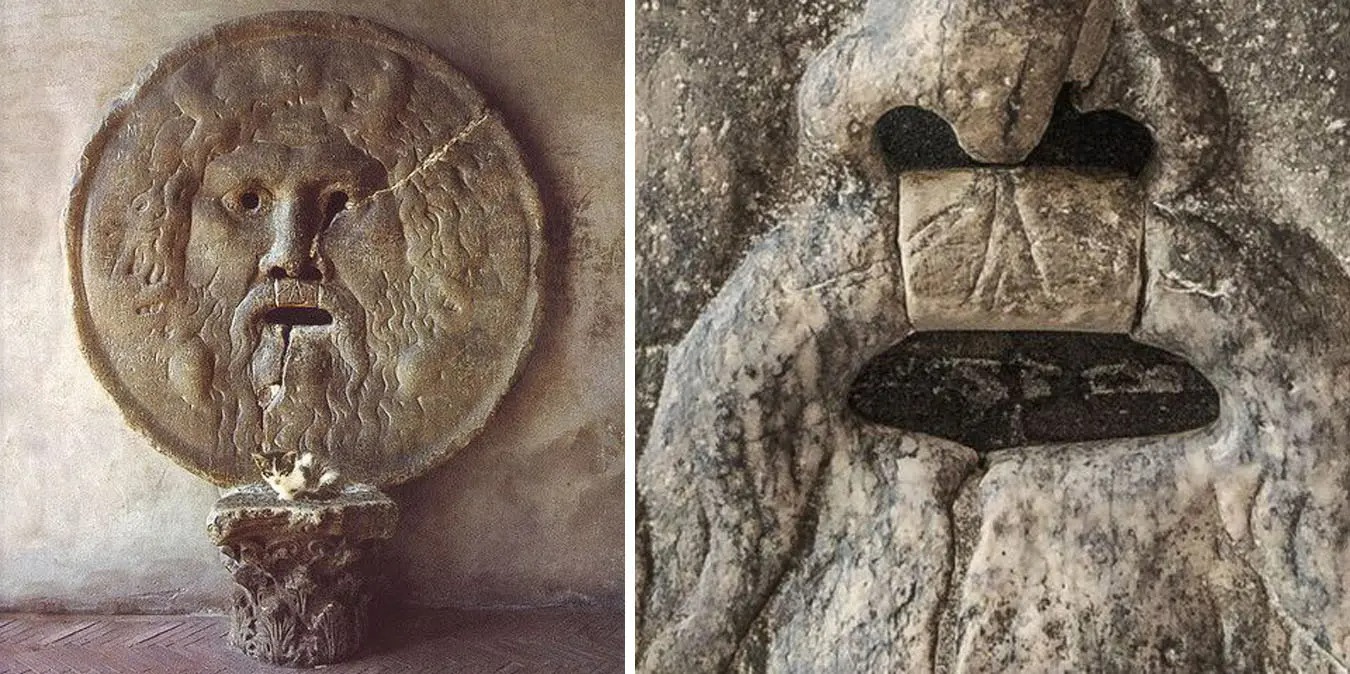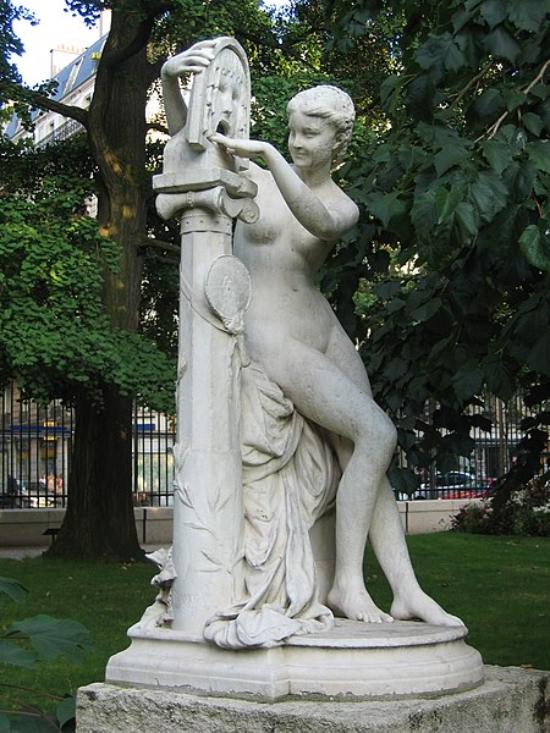Opposite the wall of the church of Santa Maria, in Cosmedin, Rome, there is an extremely puzzling relic – a weathered marble face with a gaping mouth, known as the “Bocca della Verità” or “Mouth of Truth”.
According to legend, this marble face will punish lies and dishonesty by biting off the sinner’s fingers.

The purpose and identity of this stern, bearded marble face remain a mystery. The 1,300 kg circular sculpture is surrounded by numerous legends and is shrouded in mystery. However, no one knows for sure who the face belongs to. The fascinating sculpture is approximately 20 cm thick and 175 cm in diameter. Historically, no one knows for sure what its purpose was when it was created.

The face is notable for its hollow eyes, nostrils, and gaping mouth. According to most scholars, it could be the face of the Sea God, Oceanus. Others believe the face could also belong to Triton, the Tiber god, or more commonly, the Faun, a pagan forest god.
Some theories suggest that the marble face may have been a well cover or part of a fountain in ancient Rome. Others suggest that it may have originally been a manhole cover at the nearby Temple of Hercules Victor. The temple’s roof has a circular opening, similar to the Pantheon in Rome.
Some historians have also speculated that it may be the manhole cover of the Cloaca Maxima, a still-existing giant sewer system built in ancient Rome that drained into the Tiber River. Given that theory, it would be fitting that the face belonged to Oceanus, the god of the sea, to watch over the water gushing through the city and into the river.

However, the truth is that no one knows for sure about the origin of Bocca della Verità. Local legend has it that if you put your hand in the mouth of this marble face and lie, you will probably lose your hand as punishment for lying.
This legend may have started in the Middle Ages when Rome was full of witch trials, executions and trials! The accused or suspect in court, if found guilty, would have their hands cut off as punishment.
It is believed that the Bocca della Verità was most likely created as a lie detector, and a reference to this can be found in a document from around 1450. A popular legend from the 15th century revolves around a nobleman who suspected his wife of adultery and brought her to trial before the “Mouth of Truth”. The unfaithful woman devised a cunning plan to escape the judgment of the Mouth of Truth. Her lover, dressed as a madman, suddenly approached her as she put her hand in the mouth of the Mouth of Truth. She then claimed that no one except her husband and the madman had ever touched her. Technically, this has been proven to be cunning, but it is true nonetheless. She thus escaped the judgment of the Mouth of Truth and regained her husband’s trust.

The legend of the marble mask as the arbiter of truth has been around for more than 500 years. But it is just that, a legend. The mystery of the marble face with its hollow eyes, nose, and gaping mouth has helped popularize the story in a culture haunted by pagan gods, superstition, and dark conspiracies.
But there may be some truth to it, just not the whole truth. Over the centuries, manuscripts and references have suggested that the story might have gone something like this: If the authorities deemed the person on trial guilty, the executioners would hide behind masks, armed with knives and axes, and stand ready to carry out justice.
The purpose of this giant block of marble and its original location are still unclear. But around the 13th century, it was moved to the medieval church of Santa Maria. Then, in the 17th century, after some restoration work on the church, it was moved to its current location against the church wall.
Over time, reproductions of the marble mask have multiplied. Currently, a full-size replica of the marble mask is housed at the Alta Vista Gardens in California. There is also a sculpture in the Luxembourg Gardens in Paris depicting a woman placing her hand on the “Mouth of Truth.”





